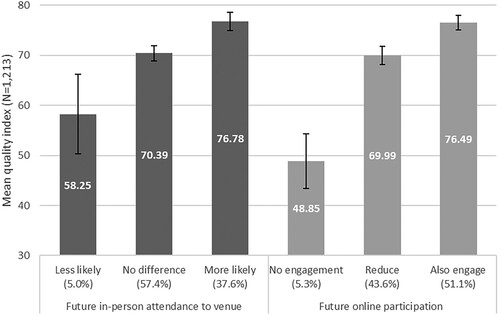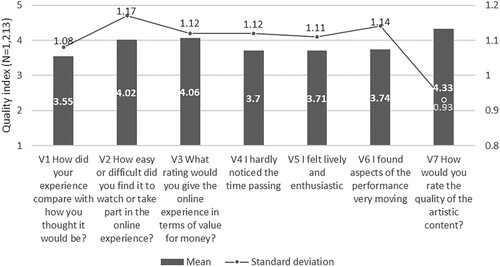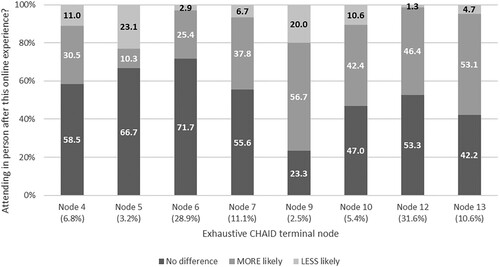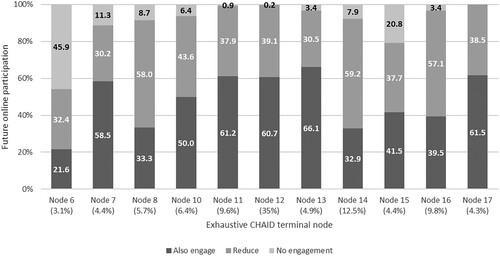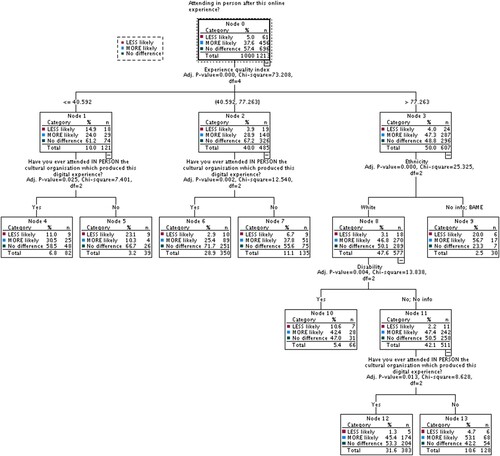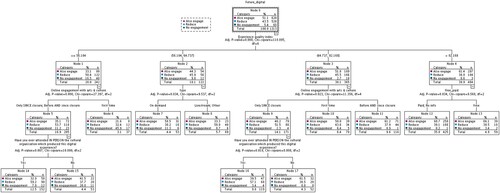Figures & data
Table 1. Descriptive statistics.
Table 2. IDE quality indicators and associated dimensions from the literature.
Figure 2. Mean quality index by demographics including 95% confidence interval for the mean. One-way ANOVA comparison is statistically significant for age (F-test = 5.741, p-value = 0.000).
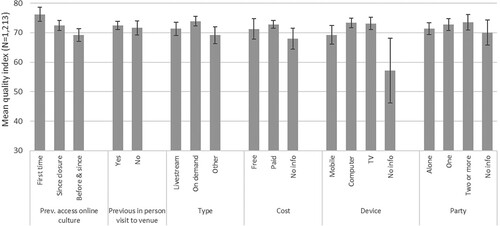
Figure 3. Mean quality index by characteristics of previous and current online experience including 95% confidence interval for the mean. One-way ANOVA comparison is statistically significant for previous online attendance (F-test = 3890.672, p-value = 0.000), type of experience and (F-test = 2043.312, p-value = 0.011) device use (F-test = 7.155, p-value = 0.000).
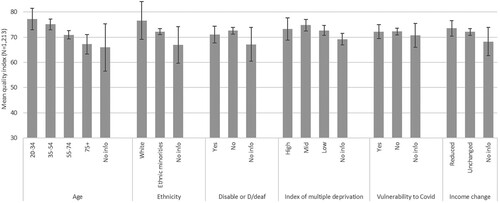
Figure 4. Mean quality indicator by Previous engagement with online culture. One-way ANOVA comparison is statistically significant for V1 (F-test = 13.623, p-value = 0.000), V2 (F-test = 4.552, p-value = 0.011), V4 (F-test = 17.751, p-value = 0.001), V5 (F-test = 4.469, p-value = 0.012) and V7 (F-test = 8.753, p-value = 0.011).
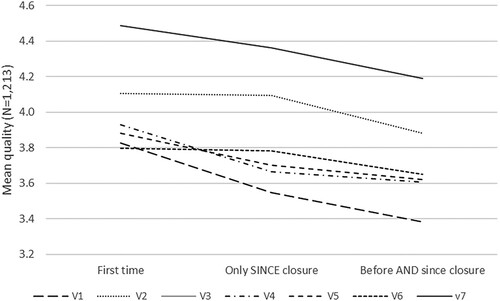
Figure 5. Mean quality index by future intentions for in-person and online participation including 95% confidence interval for the mean. One-way ANOVA comparison is statistically significant for future in-person attendance (F-test = 11855.351, p-value = 0.000), and future online participation (F-test = 60.001, p-value = 0.000).
